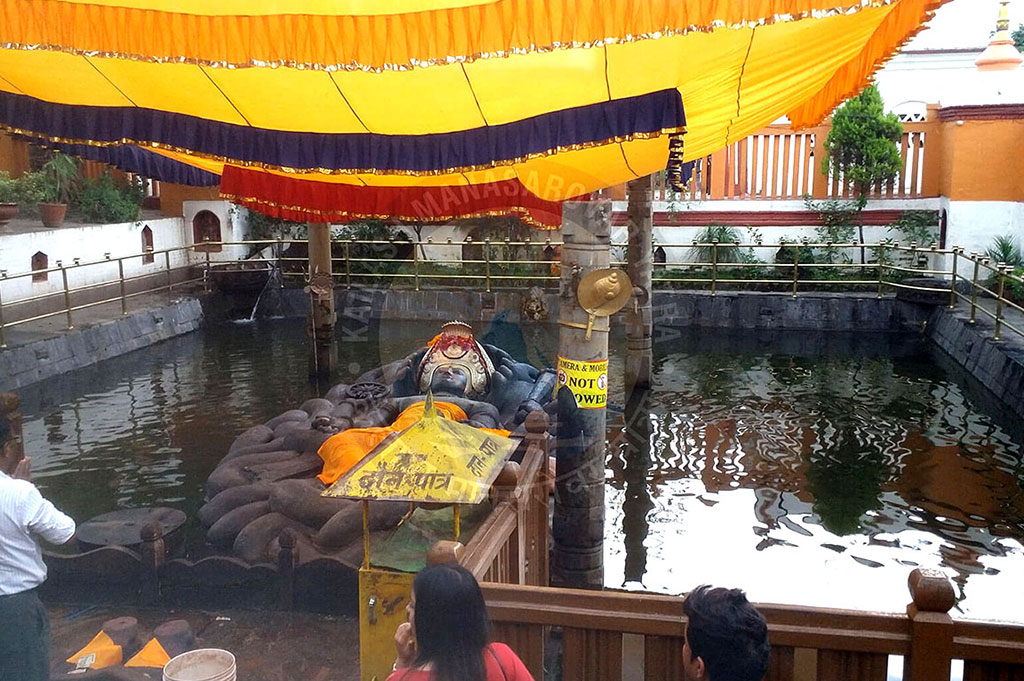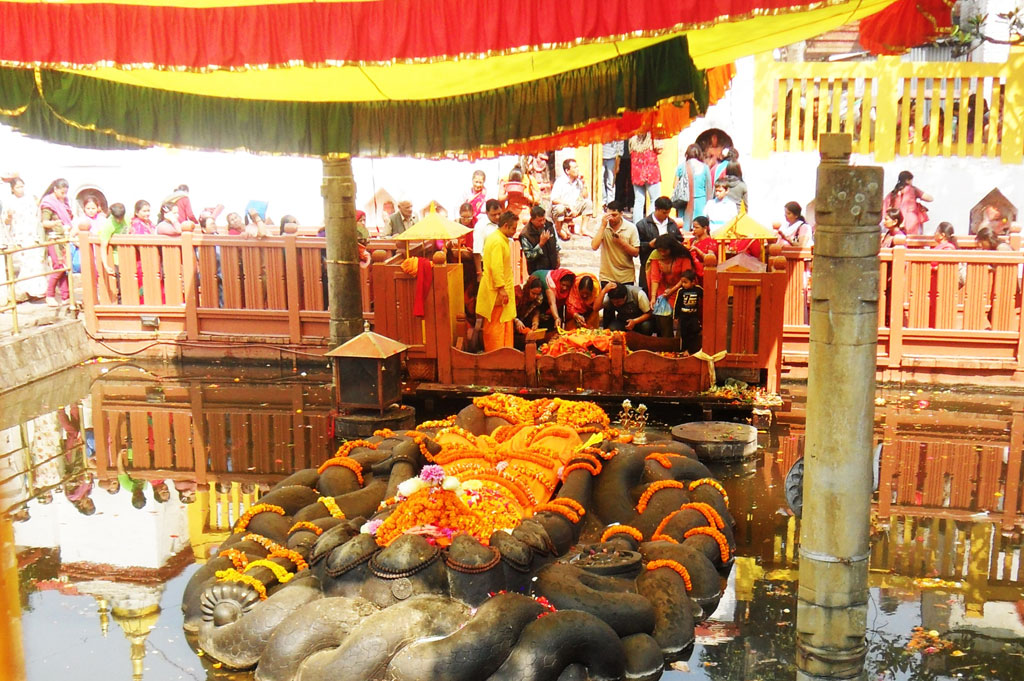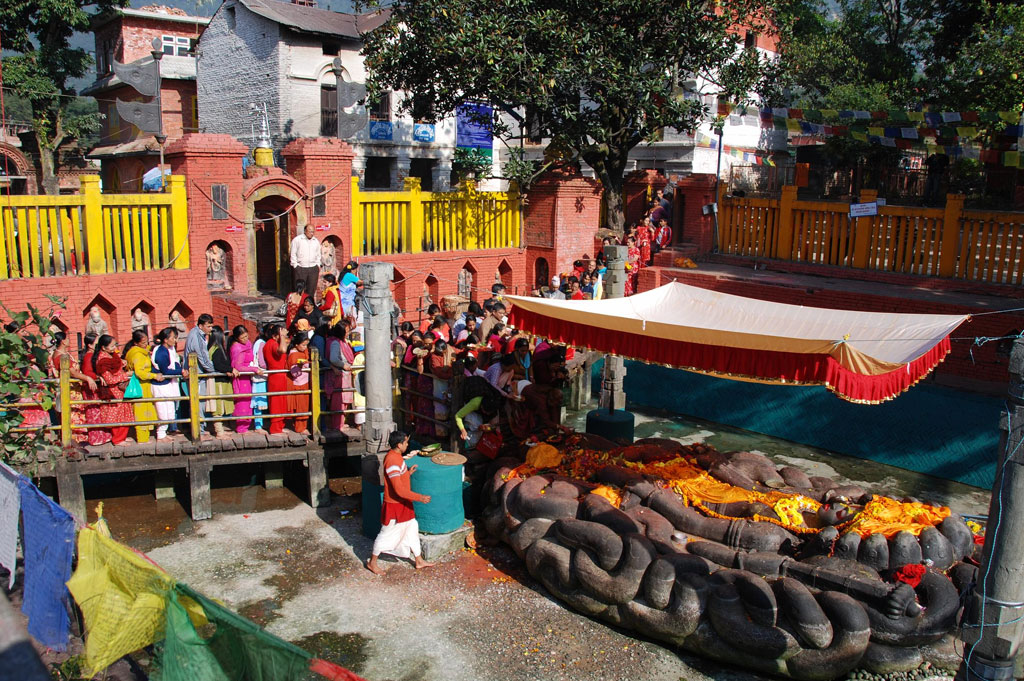Jal Narayan Vishnu Temple
The most puzzling destination of Kailash Manasarovar Yatra inculcating the sculpture of the Sleeping Vishnu accompanied with an immense piousness.
The tallest sculpture of all time, the sleeping Vishnu carrying the utmost divinity…
The highly devoted Yatra to reach the ultimate heavenly abode of the almighty Lord Shiva i.e. the Mount Kailash is counted amongst the most difficult terrains of all times. But, its results are undoubtedly fruitful. There is an existence of many important spiritual destinations spotted in between the Kailash Manasarovar Yatra which have to be visited by the devotees who are a participant in this Yatra. Moving forward with your journey without paying homage to these spots shall lead to an incomplete Kailash Manasarovar Yatra, thus visiting them is highly mandatory. One of the most favoured spiritual hubs during this journey is the very famous Jal Narayan Vishnu Temple that is commonly known as the Budhanilkantha Temple or sleeping Vishnu temple. It is the only Vishnu temple where Lord Vishnu is found sleeping. The statue of the Hindu Lord Vishnu that has been established in this temple is known as the very beautiful and the largest statue in the whole of Nepal and is situated at around 10 kilometres from the Kathmandu’s centre at the Shivapuri Hill’s base. Also, it is seen as a very puzzling one!
The tall sculpture of the Vishnu is having a length of approximately 5 meters and it is a ‘Sleeping Vishnu’. It has been notified that the formation of this statue has been done with the assistance of only a single block of the black basalt hailing from an unidentified origin. The statue lies on a pond filled with abundant water in a reclining position symbolizing the cosmic sea having a length of approximately 13 meters. The twisting coils which are made with Shesha Naga considered to be a cosmic serpent are continually acting as a support and a sheath to the resting statue of Lord Vishnu. In the statue, one shall witness the unique posture of Lord Vishnu. The legs of Lord Vishnu are crossed and his head is protected and sheltered by the eleven heads of the Shesha cradle. Having four hands, each of his hands is holding a special object symbolizing some of his immensely divine qualities and they are the club denoting the primeval knowledge, a lotus denoting the moving universe, a chakra/disc denoting the mind as well as a conch-shell denoting the four elements.
Budhanilkantha is derived from two words i.e. Budha meaning ‘old’ and Nilkantha meaning ‘Blue Throat’. But this name is presently known as a puzzling source and it is because the title ‘Old Blue Throat’ has been undoubtedly given to Lord Shiva, but the reason behind its usage to denote Lord Vishnu at this place still lies unresolved. The reason behind Lord Shiva being called the ‘Nilkantha’ is connected with a fascinating story.
Some call it a myth while the others consider it as a reality. According to the tale, some gods released some poison that was leading to the destruction of this world, seeing this they started begging Shiva to save the world from this poison as a result of which Lord Shiva drank all the poison as a result of which his throat started burning. He went up to the northern part of the Kathmandu range, created the Gosainkund Lake through his trident and lastly quenched his thirst. This had no side effects on him except the blue patch that was left on his throat. Thus, he was named the ‘Budhanilkantha’. It is believed by the devotees that the pond water on which the statue of Lord Shiva is kept in a sleeping position belongs to the Gosainkund Lake. Also, as notified by the Shaivas, they have noticed the formation of Lord Shiva’s reclining image underwater and that too especially during the Shiva festival that is celebrated there with huge fervour in the month of August every year. Apart from this, the locales also say that a mirror image of Lord Shiva is also created on the underside of the Lord Vishnu’s black coloured statue.
It is highly noteworthy that there is the presence of the two examples of the Sleeping Vishnu which are made up of the stone carvings in Kathmandu. But, they both differ in their visibility. One is situated approximately at a distance of 5 kilometres from the Balaju Gardens’ city centre whereas on the other hand, one may not be able to spot the other statue as it is situated in the Royal Palace.
The origin of the Budhanilkantha’s statue is traced with two tales. Some believe the first one while others believe the other one. According to some, the sculpture of Lord Vishnu was brought to Kathmandu where it is currently located at the time of the 17th century when the place was under the reign of Vishnugupta. On the other hand, some others believe that the statue was spotted by a farmer and his wife at an unidentified place and the moment they hit the sculpture, the blood started erupting from the ground. As a conclusion of this incident, it was recovered and was at last put to the right position at the right place in Kathmandu. However, irrespective of the place and time of the statue’s origin, it is undoubtedly confirmed that for majority of the time during the ancient years, this was considered as a reincarnation of Vishnu and this is because, there was the prevalence of Hinduism in Nepal and they believed in Vaishnavism worldly known as the ‘Worshipping of Vishnu’. But at the time of 13th and 14th century, Lord Shiva was the most popular and thus, the Budhanilkantha was not so ardently worshipped.
More Places to Visit
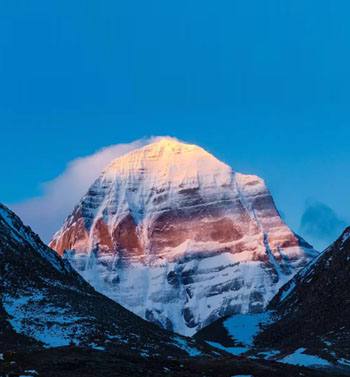
Mount Kailash
A winsome mystical agglomeration, a heavenly abode to Lord Shiva, an immensely esteemed pious destination ardently followed by thousands of devotees from all over the world- this is what defines the spiritual as well as..
VIEW DETAILS
Lake Mansarovar
The holiest lake of Tibet and also considered to be the world’s highest fresh-water lake, Lake Manasarovar is clipped in the far western Tibet Ngari Prefecture that is known to be ‘not so far’ from the mighty Mt Kailash.
VIEW DETAILS
Yam Dwar
Situated in the foothill of holy Mount Kailash, the Gate of Salvation, the Yam Dwar is one of the most prominent destinations in the Kailash Manasarovar Yatra. Engross in its spiritual relevance and feel serene!
VIEW DETAILS
Pashupatinath Temple
Pashupatinath is a Hindu temple stands in the center of the town of Deopatan, in the middle of an open courtyard on the banks of the Baghmati River, the village is 4 km far away from Kathmandu in northwest.
VIEW DETAILS
Gauri Kund
Gauri Kund, a water body that is also known as the Lake of Compassion, lies on the way while Siwasthalgoing on downwards from Dolma - La (Dolma Pass). This steep descent from Dolma Pass is a wonderful lake which is at an..
VIEW DETAILS
Tirthapuri
Next to the Sutlej River on the north bank, the Tirthapuri Hot Springs fill the infertile backdrop for this area with steam. Devotes normally visit Tirthapuri after the Kailash pilgrimage this is also considered that..
VIEW DETAILS
Om Parvat
OM Parvat is the magical and inspiring Himalayan mountain peak that rises to an altitude of Om Parvat Hindu mantra6191 m lying in the Darchula district. It is known by various names such as Adi Kailash, Chhota Kailash,
VIEW DETAILS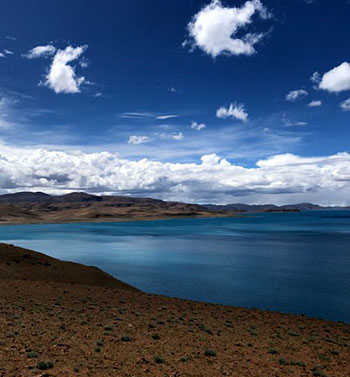
Lake Rakshas Taal
The lake of the Demon. Rakshas Tal is situated west of holy Manasarovar Lake near Mt Kailash. The river Sutlej originates from the north-western tip of Rakshas Tal. At the height of about 4752 meters (15,591 ft)..
VIEW DETAILS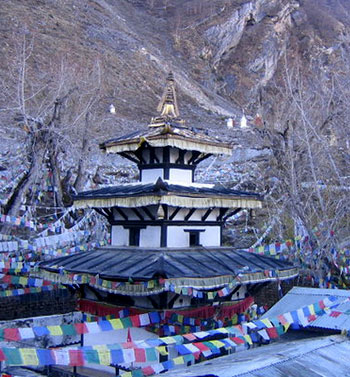
Muktinath Temple
Located at an altitude of 3,610 meters (11,872 feet) at the base of the Thorong La mountain pass in the Mustang district, Muktinath is a highly venerated sacred place for both Hindus and Buddhists.
VIEW DETAILS
Saptarishi Caves
The Saptrishi Caves are considered to be an extreme hub in the Mount Kailash Inner Parikrama. As well these caves are counted amongst the most difficult treks experienced at the time of the Kailash Inner Kora.
VIEW DETAILS
Nandi Parvat
Nandi Parvat is considered to be one of the most vital peaks in Kailash Mansarovar Yatra and thus holds utmost significance. A visit and trek to Nandi Parvat is only possible during Kailash Inner Kora tour.
VIEW DETAILS
Guge Kingdom
A highly mysterious country, Tibet contains some of those breathtaking historical sites which you can’t even imagine would have existed and one of these is the Guge Kingdom. It is counted amongst the most powerful..
VIEW DETAILS
